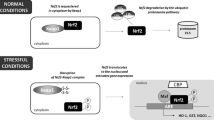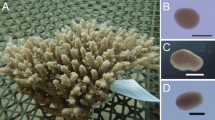Abstract
Apoptosis is an active process of cell death, which is an integral part of growth and development in multicellular organisms. The defender against cell death 1 (DAD1), the regulatory protein to inhibit the apoptosis process, was first cloned from the bay scallop Argopecten irradians by randomly sequencing a whole tissue cDNA library and rapid amplification of cDNA end (RACE). The full-length cDNA of the A. irradians DAD1 was 607 bp, consist of a 5′-terminal untranslated region (UTR) of 63 bp, a 3′-terminal UTR of 205 bp with a canonical polyadenylation signal sequence AATAAA and a poly (A) tail, and an open reading frame of 339 bp. The deduced amino acid sequence of the A. irradians DAD1 showed 75.5% identity to Araneus ventricosus, 74.5% to Drosophila melanogaster, and 73.6% to Homo sapiens, Sus scrofa, Mesocricetus auratus, Rattus norvegicus and Mus musculus. Excluding the Saccharomyces cerevisiae DAD1 homologue, all animal DAD1 including A. irradians DAD1 homologue formed a subgroup and all plant DAD1 proteins formed another subgroup in the phylogenetic analysis. The A. irradians DAD1 was expressed in all examined tissues including adductor muscle, mantle, gills, digestive gland, gonad and hemolymph, suggesting that A. irradians DAD1 is expressed in most body tissues. Furthermore, the mRNA expression levels of A. irradians DAD1 gene of hemolymph were particularly high after injury, suggesting that the gene is responsive to injury stimuli.





Similar content being viewed by others
References
Apte SS, Mattei MG, Seldin MF, Olsen BR (1995) The highly conserved defender against death 1 (DAD1) gene maps to human chromosome 14q11-q12 and mouse chromosome 14 and has plant and nematode homologues. FEBS Lett 363:304–306
Brachmann CB, Jassim OW, Wachsmuth BD, Cagan RL (2000) The Drosophila bcl-2 family member dBorg-1 functions in the apoptotic response to UV-irradiation. Curr Biol 10:547–550
Citron BA, Zhang SX, Smirnova IV, Festoff BW (1997) Apoptotic, injury-induced cell death in cultured mouse murine motor neurons. Neurosci Lett 230:25–28
Dong YH, Zhan XC, Kvarnheden A, Atkinson RG, Morris BA, Gardner RC (1998) Expression of a cDNA from apple encoding a homologue of DAD1, an inhibitor of programmed cell death. Plant Sci 139:165–174
Gallois P, Makishima T, Hechtt V, Despres B, Laudie M, Nishimoto T, Cooke R (1997) An Arabidopsis thaliana cDNA complementing a hamster apoptosis suppressor mutant. Plant J 11:1325–1331
Geske FJ, Gerschenson LE (2001) The biology of apoptosis. Hum Pathol 32:1029–1038
Higuchi Y (2003) Chromosomal DNA fragmentation in apoptosis and necrosis induced by oxidative stress. Biochem Pharmacol 66:1527–1535
Hoeberichts FA, Woltering EJ (2001) Cloning and analysis of a defender against apoptotic cell death (DAD1) homologue from tomato. J Plant Physiol 158:125–128
Kawai M, Pan L, Reed JC, Uchimiya H (1999) Evolutionally conserved plant homologue of the Bax inhibitor-1 (BI-1) gene capable of suppressing Bax-induced cell death in yeast. FEBS Lett 464:143–147
Kelleher D, Gilmore R (1997) DAD1, the defender against apoptotic cell death, is a subunit of the mammalian oligosaccharyltransferase. Proc Natl Acad Sci USA 94:4994–4999
Kumar SK, Tamura K, Jakobsen IB, Nei M (2000) MEGA2: molecular evolutionary genetics analysis software. Bioinformatics 17:1244–1245
Lee KS, Chung EH, Han JH, Sohn HD, Jin BR (2003) cDNA cloning of a defender against apoptotic cell death 1 (DAD1) homologue, responsive to external temperature stimulus from the spider, Araneus ventricosus. Comp Biochem Physiol B 135(1):117–123
Leulier F, Rodriguez A, Khush RS, Abrams JM, Lemaitre B (2000) The Drosophila caspase Dredd is required to resist gram-negative bacterial infection. EMBO Rep 1:353–358
Levine AJ (1997) p53, the cellular gatekeeper for growth and division. Cell 88:323–331
Lindholm P, Kuittinen T, Sorri O, Guo D, Merits A, Tormakangas K, Runeberg-Roos P (2000) Glycosylation of phytepsin and expression of dad1, dad2 and ost1 during onset of cell death in germinating barley scutella. Mech Dev 93:169–173
Nakashima T, Sekiguchi T, Kuraoka A, Fukushima K, Shibata Y, Komiyama S, Nishimoto T (1993) Molecular cloning of a human cDNA encoding a novel protein, DAD1, whose defect causes apoptotic cell death in hamster BHK21 cells. Mol Cell Biol 13:6367–6374
Orzaez D, Granell A (1997a) DNA fragmentation is regulated by ethylene during carpel senescence in Pisum sativum. Plant J 11:137–144
Orzaez D, Granell A (1997b) The plant homologue of the defender against apoptotic death gene is down-regulated during senescence of flower petals. FEBS Lett 404:275–278
Ruf IK, Rhyne PW, Yang H, Borza C, Hutt-Fletcher LM, Cleveland JL, Sample JT (1999) Epstein-Barr virus regulates c-MYC, apoptosis and tumorigenicity in Burkitt lymphoma. Mol Cell Biol 19:1651–1660
Song L, Zou H, Chang Y, Xu W, Wu L (2006) The cDNA cloning and mRNA expression of a potential selenium-binding protein gene in the scallop Chlamys farreri. Dev Comp Immunol 30:265–273
Srinivasula SM, Ahmad M, Hernandes-Alnemri T, Litwack G, Alnemri ES (1996) Molecular ordering of the Fas-apoptotic pathway: the Fas/APO-1 protease Mch5 is a CrmA-inhibitable protease that activates multiple Ced-3/ICE-like cysteine proteases. Proc Natl Acad Sci USA 93:14486–14491
Sugimoto A, Hozak RR, Nakashima T, Nishimoto T, Rothman JH (1995) dad-1, an endogenous programmed cell death suppressor in Caenorhabditis elegans and vertebrates. EMBO J 14:4434–4441
Tanaka Y, Makishima T, Sasabe M, Ichinose Y, Shiraishi T, Nishimoto T, Yamada T (1997) dad-1, a putative programmed cell death suppressor gene in rice. Plant Cell Physiol 38:379–383
Vaux DJ, Sorenson CM, Shutter JR, Korsmeyer SJ (1993) Bcl-2-deficient mice demonstrate fulminant lymphoid apoptosis, polycystic kidneys, and hypopigmented hair. Cell 75:229–240
Vaux DL, Weissman IL, Kim SK (1992) Prevention of programmed cell death in Caenorhabditis elegans by human bcl- 2. Science 258:1955–1957
Wang K, Gan LC, Kuo L, Hood L (1997) A highly conserved apoptotic suppressor gene is located near the chicken T-cell receptor alpha chain constant region. Immunogenetics 46:376–382
Yamada T, Takatsu Y, Kasumi M, Marubashi W, Ichimura K (2004) A homolog of the defender against apoptotic death gene (DAD1) in senescing gladiolus petals is down-regulated prior to the onset of programmed cell death. J Plant Physiol 161(11):1281–1283
Young TE, Gallie DR, DeMason DA (1997) Ethylene mediated programmed cell death during maize endosperm development of Su and sh2 genotypes. Plant Physiol 115:737–751
Acknowledgements
The authors would like to thank Mr Longtao Wu, Miss Duojiao Ni, and other laboratory members for technical advice and helpful discussions. Sequencing of the scallop cDNA library was conducted at the Huada Genomic Center (Beijing, China). This research was supported by 863 High Technology Project (No. 20060110A4013), the grant (No. 30671597) from NSFC to Dr. Linsheng Song and the grant (No.06SB011014) from South China Sea Institute of Oceanography, Chinese Academy of Sciences to Dr. Ling Zhu.
Author information
Authors and Affiliations
Corresponding author
Rights and permissions
About this article
Cite this article
Zhu, L., Song, L., Zhang, H. et al. Molecular cloning and responsive expression to injury stimulus of a defender against cell death 1 (DAD1) gene from bay scallops Argopecten irradians . Mol Biol Rep 35, 125–132 (2008). https://doi.org/10.1007/s11033-007-9061-y
Received:
Accepted:
Published:
Issue Date:
DOI: https://doi.org/10.1007/s11033-007-9061-y




